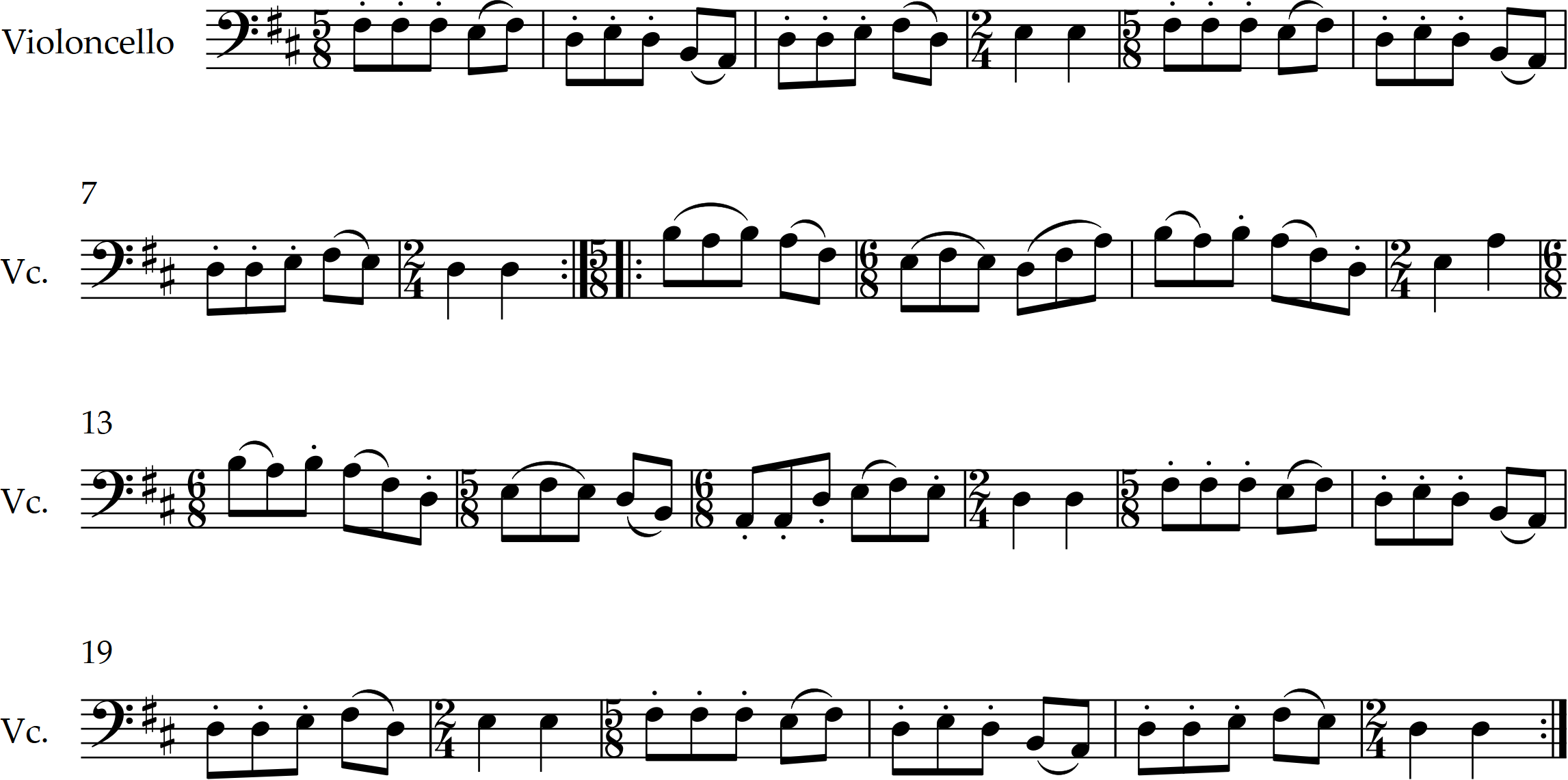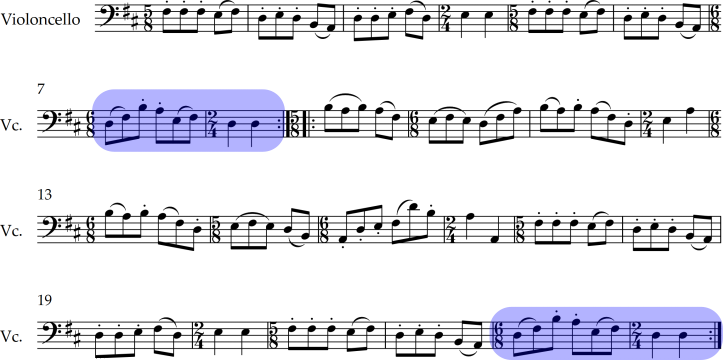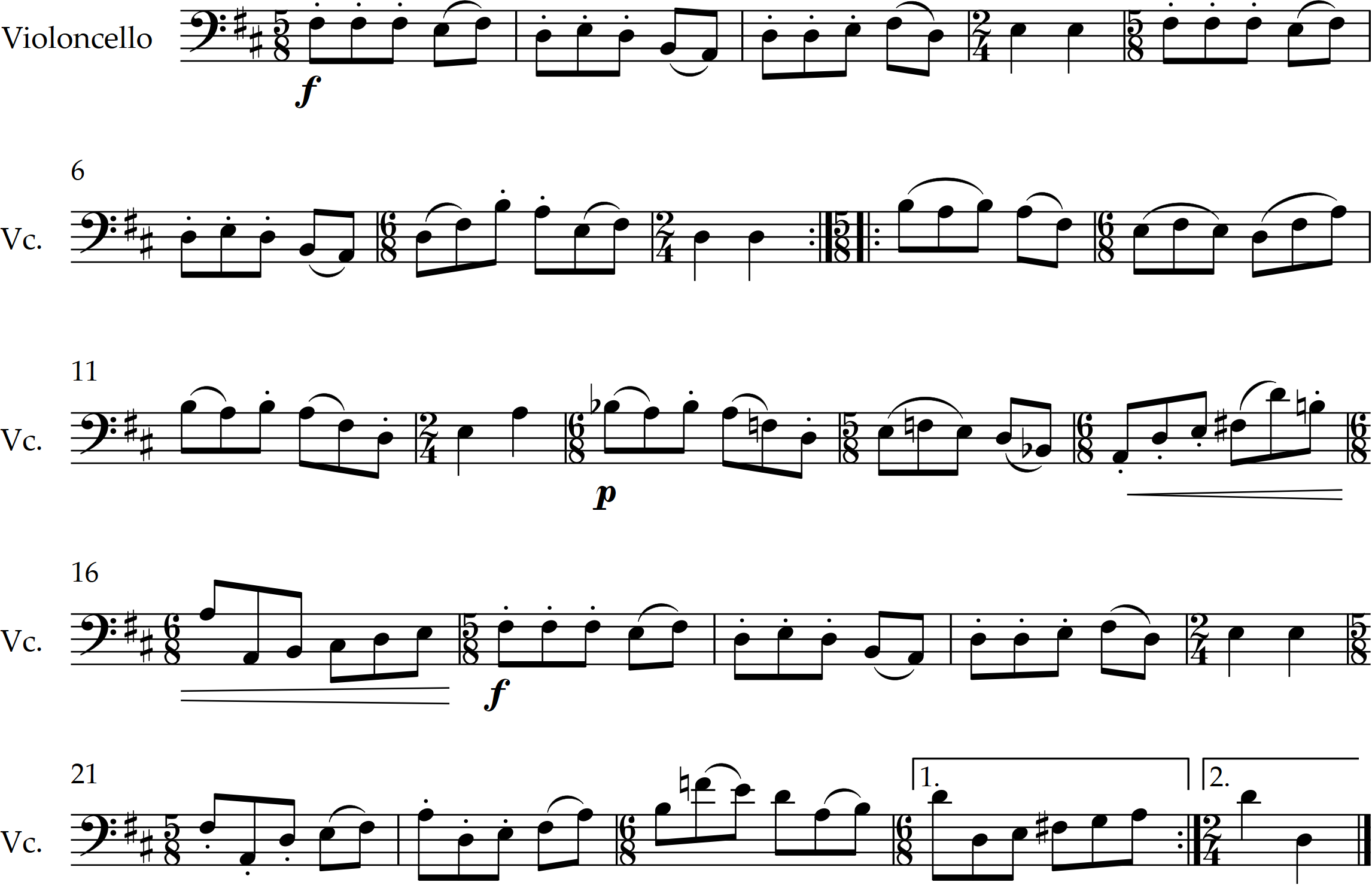Composing Phrase by Phrase 3
The Third Phrase
Hello and welcome or welcome back to my Composing Phrase by Phrase blog series! I'm two phrases into a planned 12-16 phrase composition right now. We've got the first idea, we've got a similar but slightly contrasting phrase, and now we're on to phrase three.
Some music terms. Last week, I established the idea of an antecedent-consequent phrase. It's a musical line that has a head (the antecedent) and a tail (the consequent). Moving up from describing phrases to larger structures, the two-phrase composition I left off with is a binary form. We have a phrase (which we can mark as A) and we have a contrasting phrase (which we can mark as B). The letters are used to help theorists and composers keep track of what repetition happens when. If we wrote out the full form with the repeats, it would be AABB. You play phrase A and then play it again, then play phrase B and play it again.
Now we're adding a third phrase. If two phrases make a binary form, does adding a third phrase make a ternary form? You would think so, wouldn't you. But no, it probably wouldn't. I mean, we could have a third phrase with similar but different material. If you did and kept going like that (ABCDEF... etc) you would end up with something called a through-composed work. I think a composition with three different phrases would be better described as such than ternary, which has a specific meaning I'll get to later.
Instead of adding a third contrasting phrase, the other plan would be to repeat a phrase we've already heard. With only two phrases, that means phrase A will come back. We'd end up with two sections. Section one is phrase A, repeated; section two is BA, repeated. The repeats are arguably merely conventional rather than strictly necessary, but enough music actually makes use of them that I think it's fine to perform them, myself. Digression aside - this scheme, A:BA, is called rounded binary. This as opposed to simple binary.
Using this plan, the composition would first look something like this:

phrase 3 draft
If I really wanted to be cheeky, I'd call it a day and end the post here. I won't, though. There are a few things I would like to change in order to make this a more satisfying composition. The first has to do with cadences. The sequence of cadences (at measures 4, 8, 12, 16, 20, and 24) is: open, closed (repeat) open, closed, open, closed (repeat). The cadence I've got my eye on is the one in measure 16. Remember that closed cadences have a degree of finality to them. Following them with more music is possible, but will more likely come across as tiresome, especially as the composition gets longer.
In fact, it's not unheard of for composers to poke fun at other composers who continue writing after an otherwise satisfying musical conclusion - check out Mozart's Musical Joke for an example.
The simple solution is to alter measure 16 to an open cadence. Before I do so, I'm going to turn my attention to another element that could use a little massage. That is the melodic shape, or arc. It's admittedly a little odd describing sound as having a shape. I mean, it does, it's just a three-dimensional shape that unfolds in time, so we're getting pretty meta thinking about it. To simplify, languages often describe sounds as "high" or "low" tones, or maybe "thick" versus "thin," or any other variety of metaphor.
The melodic shape is a description of how the melody changes between these qualities over time. Western music notation actually helps reinforce this metaphor by making the notes and staves resemble dots on a graph. So, if you looked at a C Major scale exercise, for example, its melodic shape is a straight line up and a straight line right back down.
C major scale
The shape of the first phrase is in two parts, both of which have the same shape. Bars 1-4 start at F#, makes its way down to A, then curls back up to F# before making a little tilde kind of thing towards E.

Phrase 1, with curve
Bars 5-8 are the same, they just settle on D, instead. The shape somewhat resembles a sine wave. If we continue to measure 9-12, we find a similar shape. The melody starts again on B, goes down to D, goes back up to B, then goes down and back up to B again. 13-16 follow the same shape again, but bigger. The melody drops all the way from B to the low A before rising to F# and settling back down to D.

phrase 2, with curve
For a composition with just two phrases, I think it's totally justifiable to have melodic arcs as similar to each other as these. Adding a third phrase of the same shapes is starting to push on the boredom button. Altering the shape somewhat at measure 15-16 will be a goal as I rewrite the cadence from closed to open.
There's also another issue. The melody has a "ceiling" rather than a "peak." The highest notes of a phrase are very important for establishing a sense of direction or aimlessness, whichever you're going for. In this case, the multiple B's in phrase 2 are the highest points of the melody. It would be nice to push higher at one spot to create a peak that stands out as a feature.
With all that in mind, here's the new line I came up with for those two measures.

revision 1, measure 16 cadence
Now, you hopefully see (or if you're a Patreon patron, can hear) how opening the cadence allows for a more natural continuation of the music into the third phrase. The rewrite also introduces the melodies first big melodic leap. This adds a good point of interest to break up the otherwise almost entirely step-wise motion of the notes.
That revision makes me think it would be a good idea to do something similar at the end of the first phrase.

revision 2, measure 8 and 24 cadences
This revision creates foreshadowing of the later rise in measures 15 and 16, as well as helps establish the coming B in measure 9.
I could stop here and be left with a perfectly decent little rounded binary composition. For the sake of exploration, I'm going to make one more little change. The repeated B's in the second phrase follow a very common pattern called The Rule of Three. Basically, our monkey brains start paying attention when something happens twice, and then get really happy when it happens a third time because that establishes a pattern.
You know the only thing better than The Rule of Three? The Rule of Three with a twist. You establish the expectation of a pattern, then deliver on that pattern... but with a twist. A little change. A slice of lemon in the water. To demonstrate, I'm going to change the third B to a Bb and alter the rest of those four bars to draw from a D minor pentatonic scale instead of the D major.
This produces a dramatic contrast that I'm going to underline with a change in dynamic. It is enough of a change that my ear feels like the cadence needs to help bring the harmony back to D major, as well, so I've rewritten measure 16. This rewrite helps to reestablish the prior harmonic material and maintain momentum into the final phrase. Double plus good!
Lastly, I'm going to tweak the last phrase of the composition with another big arc up to a final peak (there's that Rule of Three again - a rise to a peak in phrase 1, a rise to a bigger peak in phrase 2, and a rise to a biggest peak in phrase 3). I'll also touch on F-natural instead of F# for a little color, and to help recall the shift to D minor that happened earlier. My ear is also telling me it would help for the end of the second section to loop back into the repeat for the sake of maintaining forward motion. The first/second ending repeat is a notation that allows me to save space by telling the performer the first pass ends differently than the repetition.
Here's the final result.

Revision 3, final rounded binary form
Phew! That's a lot of words for just a couple of changes. Hopefully you can see the impact that had on the final product, though. These revisions do push the composition out of beginner/intermediate student reach and into more advanced instruction. It's also drifted outside of "folk melody" territory. That's fine. It was going to do that as the piece expanded, anyways.
That's all for today! If you enjoyed reading, consider following the blog on your RSS feed. If you really enjoyed it, and/or would like to see MIDI score videos of the revisions in progress, join my Patreon! I also offer pedagogical compositions and exercises for strings, as well as random projects that catch my fancy as time allows. Either way, thanks for reading!


Comments powered by CComment